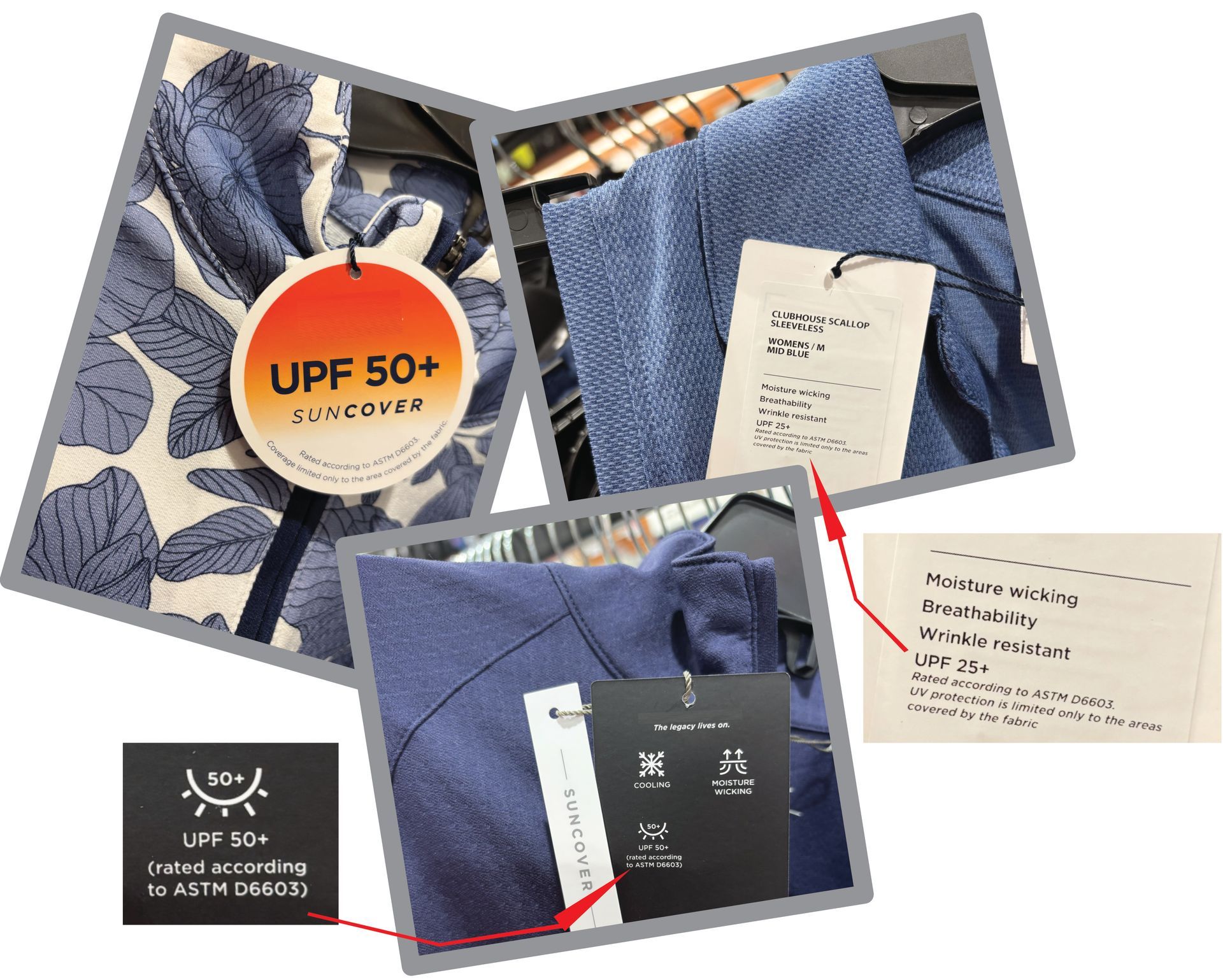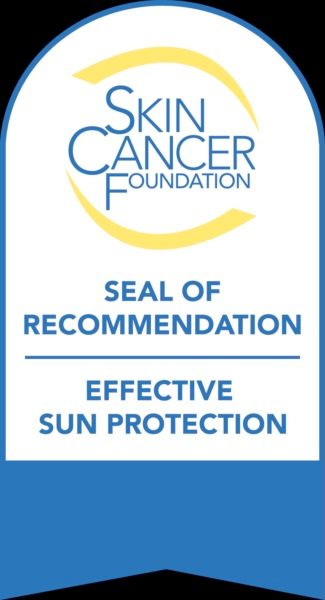Sun Protective Clothing
Does it really work?
We know that our skin is sensitive to ultraviolet (UV) radiation from the sun and we know that putting on sunscreen, wearing a wide-brimmed hat, etc., are good ways to protect our skin.
This month, we're looking into sun protective clothing and whether it really makes a difference. After all, it is generally more expensive and we like to spend wisely. Here's what we learned...
Clothing does protect our skin from the sun, to varying degrees, based on these factors relating to the clothing itself:
- How much of the body's surface area is covered (BSAC) by the piece of clothing;
- The fabric it's made of: how tightly woven or knit the fabric is, the type and thickness of the fiber, the thread count, whether it has been chemically treated (i.e. with bemotrizinol, which absorbs UV radiation), and even the color.
A standardized rating scale for the level of sun protection provided by clothing was first developed in Australia in 1996 and has been adopted almost universally by the textile industry. Called the Ultraviolet Protection Factor (UPF), it addresses the second bullet point of factors above (not the first), and it has been implemented in Britain (which now has its own standards scale), Europe, and the U.S.
A new classification scale that simultaneously considers both bullet points above, called the Garment Protection Factor (GPF), has been in use since 2018, although UPF still seems to be more prevalent on labels. Ideally, a label would show the GPF, or failing that, both the UPF and BSAC.
A light-weight fabric would have a UPF of less than 5, for example, and a piece of clothing made of tightly-woven fabric could be rated 40 or 50. UPF measures how much UV radiation penetrates the fabric. Of course, if the piece of clothing only covers a small surface area, it would leave a lot of skin exposed to the sun, which is why GPF is a more comprehensive measure.
The American Skin Cancer Foundation requires a UPF of 50 to qualify for its Seal of Recommendation and fabric that is UPF 50 should block about 98% of UV radiation. This is comparable to a sunblock's sun protection factor (SPF) of 30. Wearing clothing rated at UPF50 doesn't mean being able to forego sunblock, however, since certain areas (especially the face, the hands, the feet, etc.) may not be covered by the clothing and may still be exposed to harmful UV radiation. That's where sunblock can finish the protection job.
Also to note, UPF-rated clothing provides less UV protection when wet or when stretched, so we need to consider our activity and how loosely the clothing fits. The UV protection also wears down with laundering - it depends on the fabric, the sun-protective treatment it may have undergone when it was made, and how frequently it is washed using which wash cycle. Reading the label makes for better-informed decisions.
There are now laundry aids on the market that add sun-protective chemicals to clothes that one owns already, but there has not been sufficient research to show how well they work, or that they don't cause other unintended issues.
Well, there you have it! Our curiosity satisfied for another month, we continue our regular work as pharmacists, answering questions about certain medications and sensitivity to sunlight. Please feel free to drop by, swing by our drive-thru, or call us! We love to hear from you and to help.

References and Resources
- James Cook University Australia on body surface area covered by sun-protective clothing - https://wvumedicine.org/camden-clark-health-wellness/project/shower-off-the-yuck/
- The first result in this search in Science Direct, from the Chapter on Sun Protection in Man in the book Comprehensive Series in Photosciences by Colin M.H. Dirscoll - https://www.sciencedirect.com/topics/pharmacology-toxicology-and-pharmaceutical-science/sun-protective-clothing
- Harvard Health Publishing on the best sun-protective clothing - https://www.health.harvard.edu/staying-healthy/the-best-sun-protective-clothing
- American Council on Science and Health on sun protection - https://www.acsh.org/news/2024/03/11/should-we-fear-sun-or-sun-protection-17707
- Skin Cancer Foundation on sun-protective clothing -
https://www.skincancer.org/skin-cancer-prevention/sun-protection/sun-protective-clothing/
- Cleveland Clinic on whether sun-protective clothing actually works -
https://health.clevelandclinic.org/does-sun-protection-clothing-actually-work
- U.S. National Library of Medicine on an overview of ultraviolet protective clothing - https://pmc.ncbi.nlm.nih.gov/articles/PMC9414157/
- University of Utah Health on what clothing is best for sun protection - https://healthcare.utah.edu/huntsmancancerinstitute/news/2023/08/what-clothing-best-sun-protection
- University of Texas MD Anderson Cancer Center on 7 things to know about UPF - https://www.mdanderson.org/cancerwise/7-things-to-know-about-upf--sun-protection-and-clothing.h00-159698334.html
- ARPANSA, Australian Radiation Protection and Nuclear Safety Agency on UV rating tags -
https://www.arpansa.gov.au/our-services/testing-and-calibration/ultraviolet-radiation-testing/labelling-sun-protective-clothing
Note - Our blog is researched and written by one of us at The Pharmacy, not AI or an external service. Let us know your thoughts on these topics and/or what you'd like to see here!






